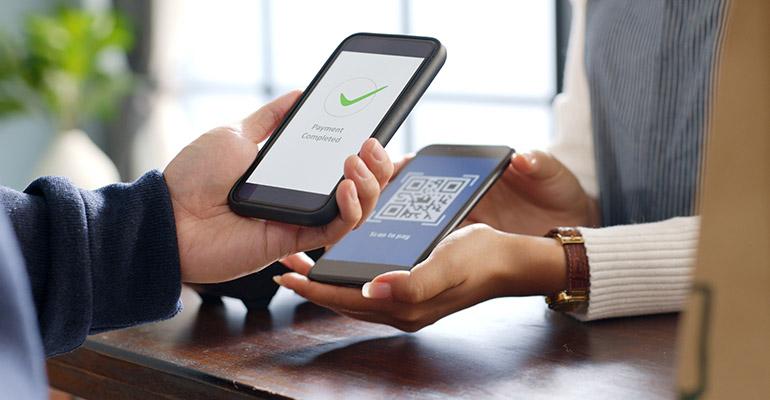Customer brand loyalty, frequency and spend took on increased importance during the difficult economic times caused by the pandemic, and nowhere was it more apparent than in the quick-service restaurant (QSR) sector. While many QSR brands rushed to roll out or revamp rewards programs and mobile apps to help better communicate with customers and offer incentives to visit, some limited their effectiveness by making the programs more about one-way marketing than two-way, one-to-one engagement. Others have narrowly equated enrollment with consumer loyalty.
There’s more to building loyalty than simply offering rewards and incentives for consumers to buy again. A study conducted by Accenture across 25,000 global consumers discovered that the pandemic caused 50% to rethink what’s valuable to them — including how the companies they do business with understand and address their needs.
This same study discovered that while price and quality still remain prime purchasing motivators, others are rising quickly, among them service and personalization — does the brand remember me and make my experience as personal as it can be? Engaging one-to-one and building an emotional connection are what can turn a repeat customer into a loyal one.
In a deep review of Mobivity’s own platform data we analyzed over 500 million text messages across 15 million consumers of 40 foodservice brands. The most important takeaway speaks directly to the growing importance of increasing engagement and fostering an emotional connection to the brand. And by communicating regularly with customers via their most personal and preferred channel, brands can increase customer loyalty and transform their reward programs.
The analysis also found that text marketing program subscribers visited 44% more frequently than non-subscribers. And, after joining a text marketing program, guests increased their frequency and spend by 23%.
There are several reasons for this uptick. Text messages have a significantly higher open rate than email messages — 98% for texts versus 20% for emails. Plus, people tend to view their text messages within minutes of receiving them. Emails can remain unopened in inboxes for days, or worse, get routed to spam folders.
So QSR marketers can get value messages to customers quickly via text and be sure that the message is delivered. This is borne out by Mobivity’s data, which found that 60% of redemptions via text occur within the first 24 hours, and 39% of redemptions happen on the same day subscribers receive the offer. For marketers with time-sensitive promotions or who are looking to boost traffic during slow times via dayparting, this kind of responsiveness to text messages is hard to dispute.
Another finding that might surprise marketers is that the retention rate for text message subscribers is significantly higher than that of email subscribers. The retention rate of subscribers after 90 days in a text message program is 96%. By comparison, 39% of email subscribers cancel their subscription and two thirds of mobile app users delete the app within the first 90 days.
As a further indication of how sticky text messaging programs are, after one year, 93% of subscribers remained in the program, and after two years, 90% were still agreeing to receive messages. These are clearly very loyal customers who find value in receiving text messages from trusted brands.
Why is this the case? One reason is that customers must be highly motivated in the first place to give their mobile phone number to a brand and opt-in to receive text notifications. They have likely received something of value initially, such as a free entrée or side, and they see continued value in remaining subscribed to the text message program.
Another reason is that text message marketers take the time to carefully segment the subscriber base, use the messages to cultivate relationships and foster a sense of exclusivity among recipients. Messages around new menu items, operating hours, insider tips and well-timed reminders to visit can have as high an impact as a coupon.
This ties back to what really engenders loyalty; it’s not just about discounts and promotions, but it’s about understanding customer needs, meeting their expectations and building trust. Research reinforces the value of a well-managed text message marketing program — one that provides economic value immediately, provides a steady and consistent cadence of messages with personalized offers based on past purchases and continues to provide value with every message. As our clients often attest, effective and meaningful engagement leads to more frequent visits, higher spend and a deeper sense of brand affinity, which translates to higher incremental sales.
As a complement to email and mobile app marketing, text messaging programs provide a further boost to traffic frequency and spend while driving loyalty to new levels. Given the high retention and redemption rates of text program subscribers, investment in text message marketing can yield a substantial return. In fact, measured over six months, a text subscriber can be valued at $12.15 on average in incremental revenue. And in today’s environment getting loyal customers to return more frequently is the name of the game. Ultimately, though, loyalty is about more than rewards - it’s about getting in front customers regularly with messages and offers that matter.
AUTHOR BIO
Chuck Moxley is a marketing leader with 25-plus years’ experience developing innovative marketing programs for dozens of B2B/SaaS companies and consumer brands. In addition to SVP of Marketing at Mobivity, he is one of the nation’s leading experts on the convergence of technology and marketing and co-author of Audience of One, a book on breakthrough marketing strategies to change consumer behavior and drive revenue to the bottom line.

